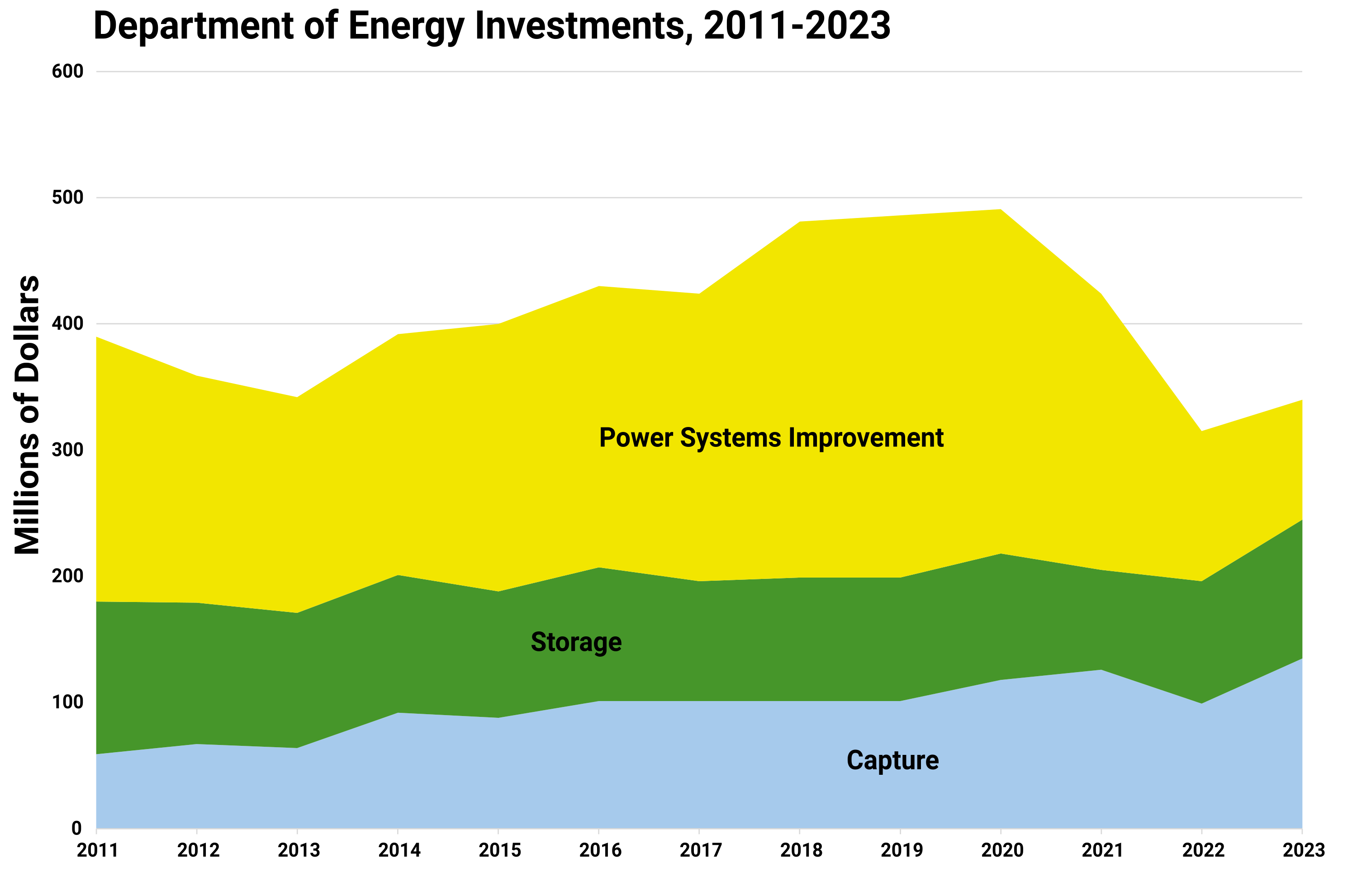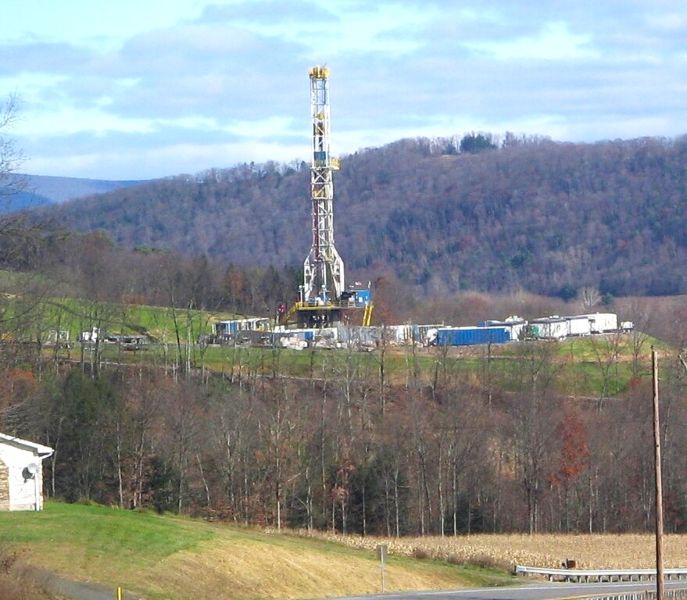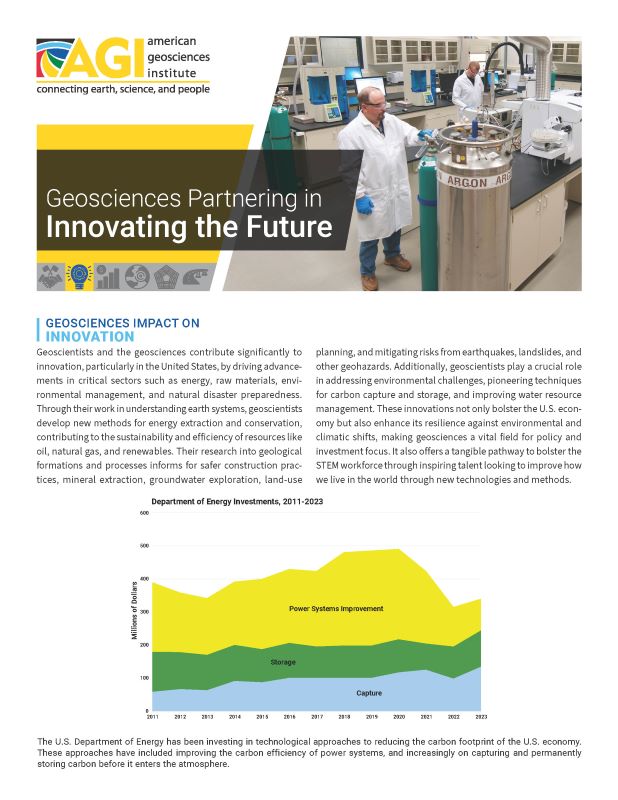Geosciences Partnering in Innovating the Future
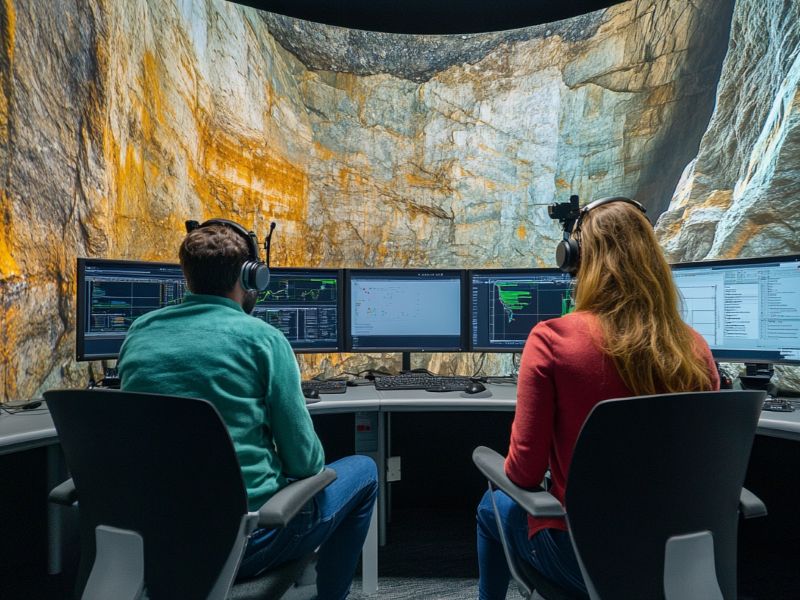
Geoscience is the catalyst for groundbreaking innovation, advancing energy solutions, environmental stewardship, and disaster resilience that drives technological progress, sustains resources, and shapes a sustainable future.
Geosciences Impact on Innovation
Energy Exploration and Extraction
Geoscientists innovate in methods to locate and efficiently extract natural resources, including oil, gas, and geothermal energy, which are vital for the nation's energy independence.
Hazard Assessment and Mitigation
Geologists and geophysicists develop predictive models and tools to assess and mitigate risks associated with natural disasters like earthquakes, volcanoes, and landslides, enhancing public safety and infrastructure resilience.
Environmental Protection and Restoration
Geoscientists utilize geological knowledge to restore degraded landscapes, manage waste disposal, and rehabilitate ecosystems affected by industrial activities.
Climate Change Research
Geoscientists investigate the geological record to understand past climate changes and predict future trends, contributing to strategies for adaptation and mitigation.
Water Resources Management
Hydrogeologists ensure secure and sustainable groundwater quantity, quality, and distribution, which are critical for agriculture, industry, drinking water, and urban development.
Carbon Capture and Storage
Geologists and geochemists lead efforts in the geological sequestration of carbon dioxide to combat climate change and reduce greenhouse gas emissions and enhance the recovery of oil and natural gas and critical minerals.
Advanced Material Development
Geoscientists discover and characterize new mineral deposits increasingly in extreme environments, that can be used in technology and manufacturing, driving technological advances. Geoscientists are particularly focused on extractive material processes which are central to utilizing new raw material sources and advanced recycling.
Coastal and Marine Geosciences
Oceanographers and marine geologists enhance the understanding of coastal processes and marine ecosystems, important for managing coastal development, protecting marine biodiversity, and supporting fisheries. Advanced knowledge of marine geology in needed for anchoring renewable energy infrastructure, such as wind turbines.
Exemplars of Impacts of Geoscience on Innovation
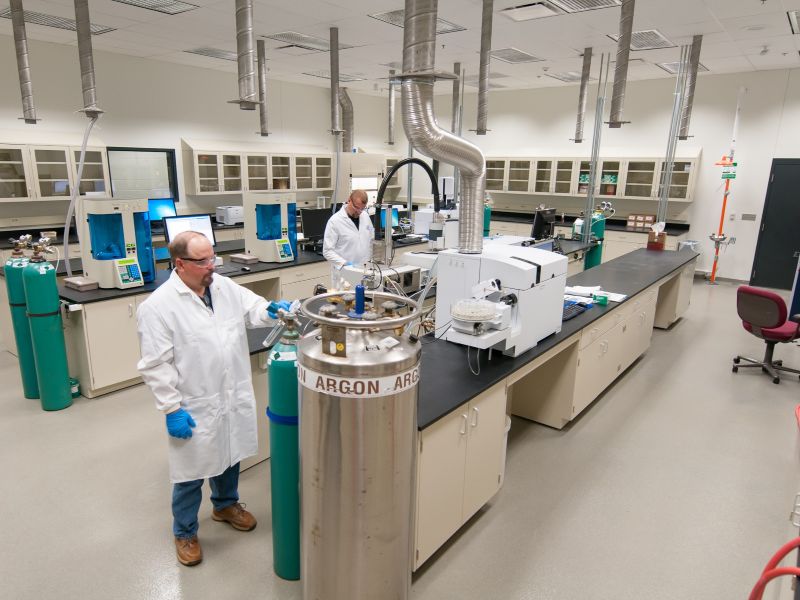
Geoscientists use advanced geophysical and geochemical techniques to discover and evaluate mineral deposits essential for manufacturing, technology, and construction industries. Innovations in this field have led to more efficient extraction methods that are less invasive and more environmentally sensitive. Innovations in operating in extreme environments, whether in deep water, polar environments, or extreme depths into the crust, have opened new possibilities for accessing minerals and hydrocarbons located in previously untapped locations and doing so with modern, environmentally sustainable practices from the start. Hydraulic fracturing of low-permeability rock formations has led to a revolution in natural gas production, making the U.S. a world leader.
Geoscientists are at the forefront of exploring geoengineering solutions, such as artificial enhancement of rock weathering or crustal injection, to remove carbon dioxide from the atmosphere and mitigate the effects of climate change. By mapping and analyzing the distribution and quality of natural resources, geoscientists develop sustainable management practices that minimize environmental impact and help balance ecological needs with human usage. Geoscientists contribute to the renewable energy sector by assessing geothermal energy potential and improving the extraction and management of these resources. They also play a critical role in locating and evaluating sites suitable for wind and solar energy farms.
Case Studies
Examples of Relevant Legislation and Policy
Executive Orders
- 14008: Directive on climate change directly involves innovation in geosciences through its focus on clean energy technologies, sustainability, and environmental protection. It mandates significant investment in climate-related scientific research and the deployment of technologies that will leverage geoscientific knowledge.
Congressional Legislation
- 117th — S. 1260: U.S. Innovation and Competition Act (USICA). While not enacted into law as a whole, various components of this comprehensive package were integrated into other legislation, including the CHIPS and Science Act. USICA originally included significant funding for basic and advanced research, enhancing America’s competitiveness in science and technology, including environmental and earth sciences.
- 117th — H.R. 4521: America COMPETES Act of 2022. This is another legislative effort, like USICA, aiming to significantly boost U.S. capabilities in technology and scientific research. It includes support for STEM education and workforce development, which would inherently support the geosciences sector.
Relevant Federal Agencies
- National Science Foundation
- US Department of Energy
- National Institute of Standards and Technology
Related National Academy Reports
- Climate Intervention in an Earth Systems Science Framework: Proceedings of a Workshop–in Brief (2024)
- Foundational Research Gaps and Future Directions for Digital Twins (2024)
- Progress and Priorities in Ocean Drilling: In Search of Earth’s Past and Future (2024)
- Supporting Black Students Through Their Science, Engineering, and Medicine Career Journeys: Proceedings of a Workshop (2024)
- Accelerating Decarbonization in the United States: Technology, Policy, and Societal Dimensions (2023)
Non-Partisan Non-Profit Expertise
- American Association of Petroleum Geologists
- American Institute of Hydrology
- American Institute of Professional Geologists
- Association of American State Geologists
- Association of Environmental and Engineering Geologists
- National Groundwater Association
- National Sand, Stone, and Gravel Association
- Society of Economic Geologists
- Society of Exploration Geophysicists
- Society for Mining, Metallurgy, and Exploration

